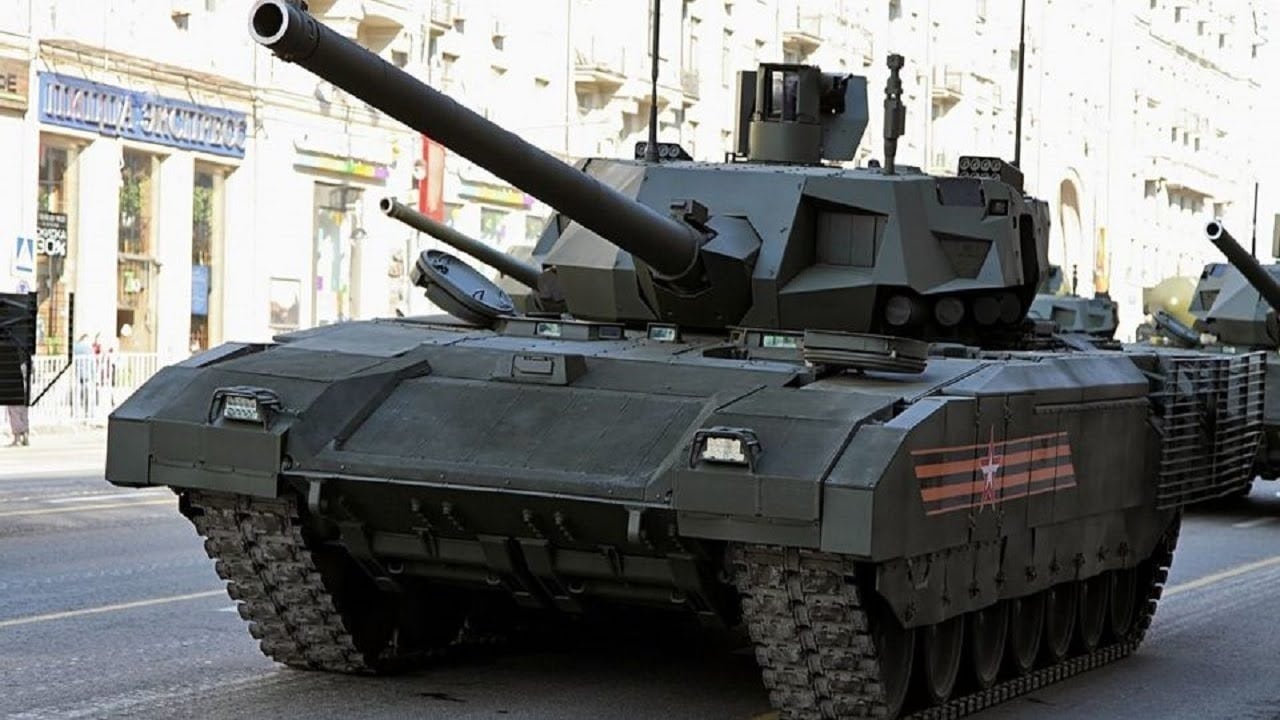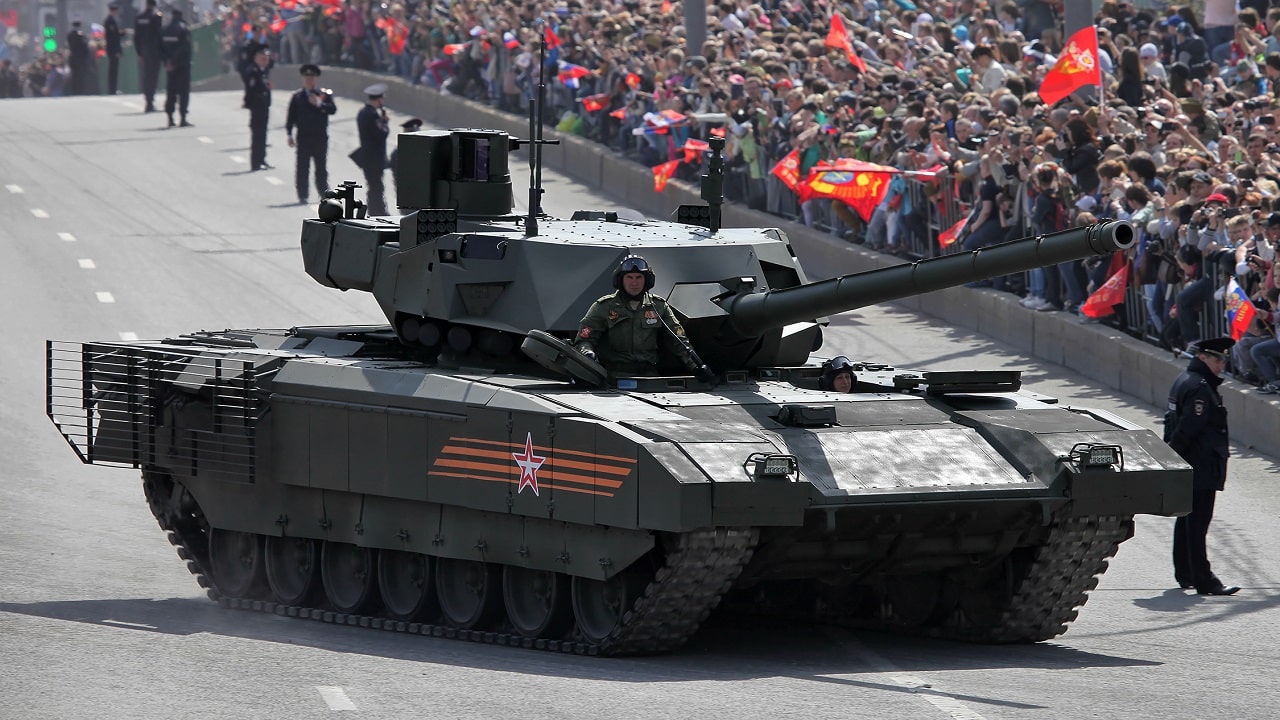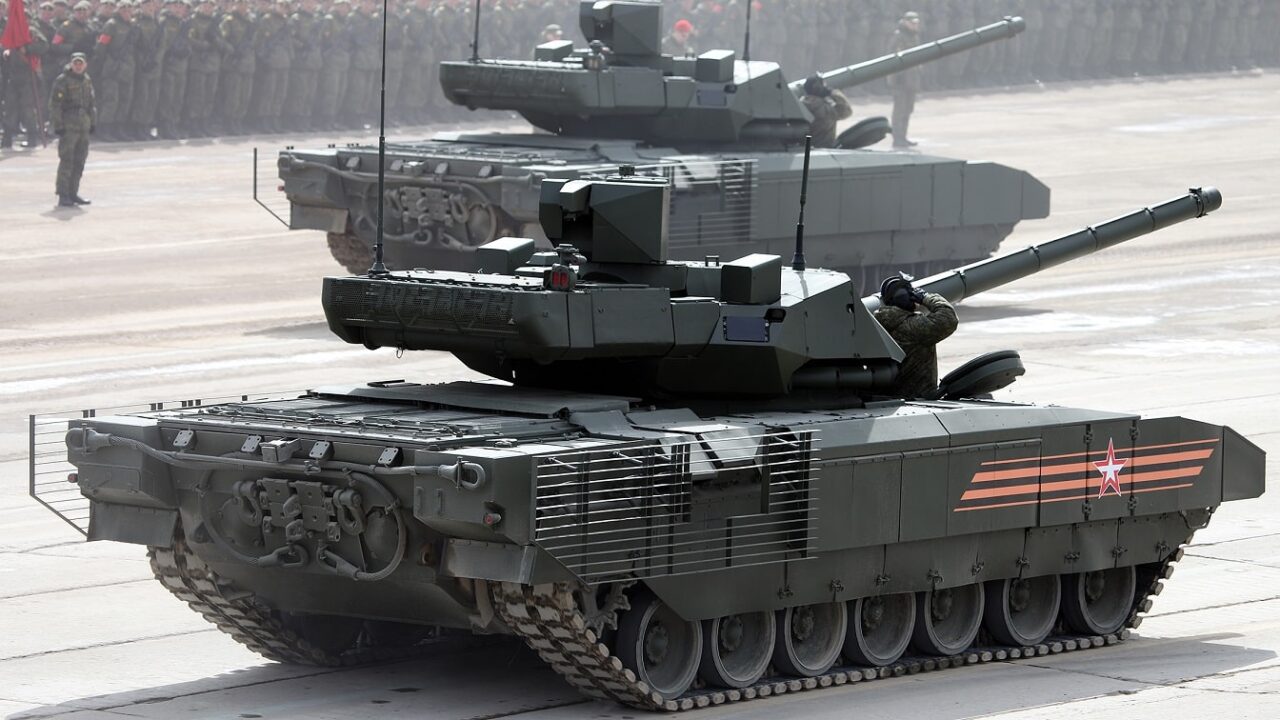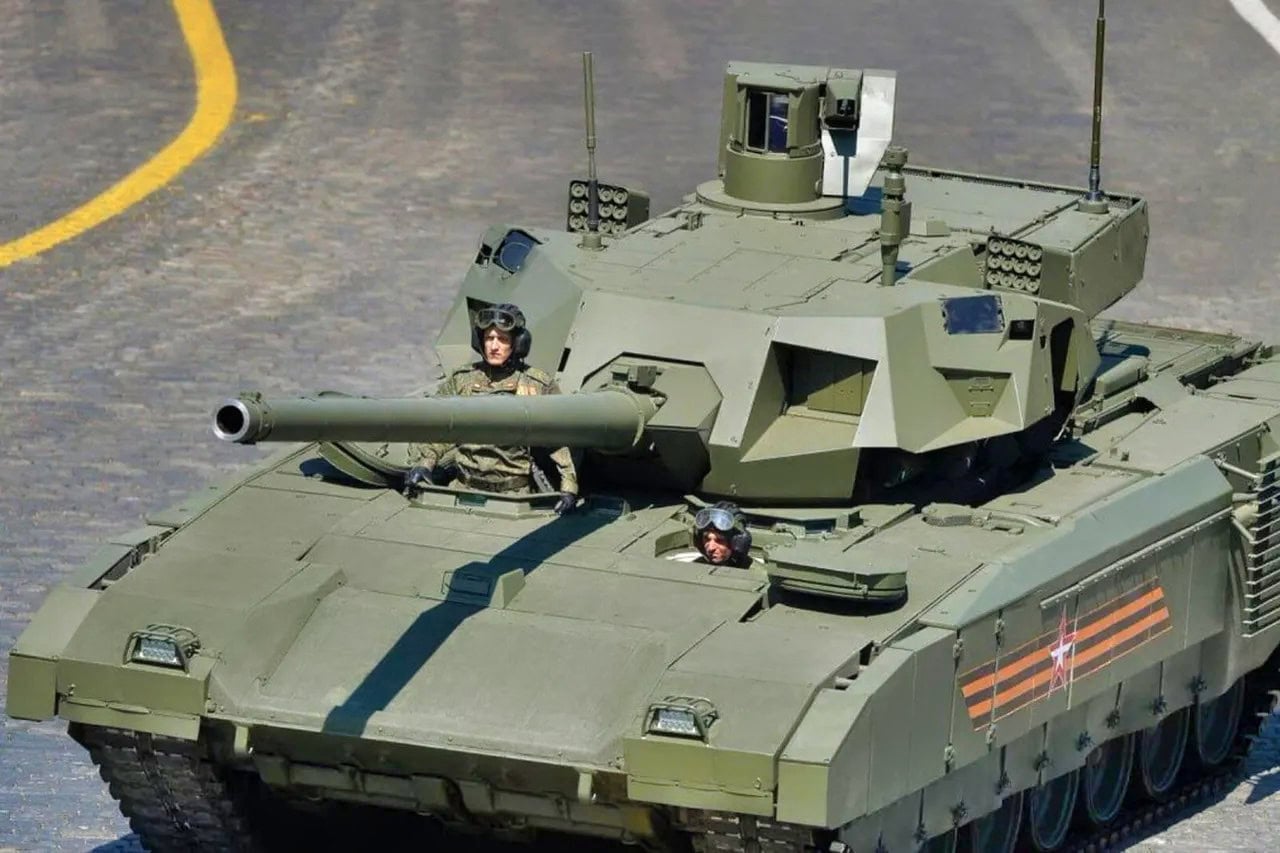Key Points and Summary: Russia’s T-14 Armata was unveiled as the world’s most advanced tank, boasting an unmanned turret, active protection systems, and cutting-edge sensors.
-However, nearly a decade later, its production remains limited, and it has yet to see significant combat. Sanctions have restricted access to critical components, and the high cost has led Russia to rely on upgraded Soviet-era tanks instead. Despite attempts to market the T-14 internationally, no confirmed export orders exist.
-While the Armata is a symbol of Russian military ambition, it remains unclear whether it will ever play a meaningful role in warfare or remain a technological showpiece.
The T-14 Armata: Hype vs. Reality in Russia’s Tank Program
Few military platforms in recent years have generated as much speculation and debate as Russia’s newest tank, the T-14 Armata.
First unveiled during Moscow’s 2015 Victory Day Parade, the T-14 was touted as the most advanced main battle tank in the world, boasting a suite of technological innovations that, on paper, placed it a generation ahead of Western counterparts.
Yet nearly a decade later, its production remains limited, its battlefield presence rare, and its political insignificance increasingly apparent. Much like the Su-57 Felon fighter jet program, the T-14 is more than just a weapons system—it is a reflection of Russia’s broader geopolitical ambitions, industrial constraints, and military doctrine in an era of renewed great-power competition.
The Pros: What Makes the Armata Tank Different
Unlike its predecessors—the T-72, T-80, and T-90—the T-14 represents a fundamental departure from traditional Soviet and Russian tank design philosophy. Historically, Russian tanks prioritized mass production, mobility, and simplicity over cutting-edge technology and crew survivability.
The Armata, by contrast, embraces a Western-style emphasis on crew protection and advanced sensor integration, featuring an unmanned turret, an active protection system (APS) to intercept incoming projectiles, and a suite of digital battlefield networking capabilities. The most revolutionary feature of the T-14 is its unmanned turret, which allows the crew to remain inside a heavily armored internal capsule.
This design is intended to improve crew survivability, an area where Soviet and Russian tanks have historically been vulnerable, as seen in the extensive losses of Russian armor in Ukraine. The tank is also reportedly equipped with the Afghanit APS, designed to detect and neutralize incoming threats, theoretically rendering it far more survivable than older Russian models.
The Cons of the T-14 Armata
Despite its technological advancements, the T-14 Armata has faced significant production hurdles. Initial plans envisioned large-scale production that would replace older Soviet-era tanks and equip Russia’s armored divisions with a next-generation warfighting capability.
However, financial constraints, technological difficulties, and international sanctions following Russia’s annexation of Crimea in 2014 have impeded its mass deployment.
The economic reality of Russia’s defense industry is a key limiting factor. Producing a T-14 is significantly more expensive than upgrading existing T-72B3 or T-90M tanks, both of which have been heavily utilized in the war in Ukraine.
Given the immense strain of ongoing military operations, Russia has prioritized the modernization of legacy platforms over committing to the costly and complex Armata. Reports indicate that only a small number of T-14s have been produced, with some sources suggesting fewer than 100 units exist in operational condition.
This mirrors the challenges faced by the Su-57 Felon, Russia’s fifth-generation fighter jet, which has also seen production delays, procurement hurdles, and questions about its battlefield effectiveness. In both cases, Moscow has showcased these platforms as symbols of military modernization while struggling to field them in numbers that would make a real strategic difference.
Moreover, in both cases Russia’s ability to source high-tech components has been severely hampered by Western sanctions. Advanced optics, electronics, and even critical manufacturing equipment are increasingly difficult to acquire. While Russia has sought to substitute domestic alternatives, the quality and reliability of these replacements remain questionable.
The Ukraine War Dilemma
The war in Ukraine has brought renewed attention to Russia’s armored forces, though the T-14 has remained conspicuously absent from frontline combat. In early 2023, reports suggested that a limited number of T-14s were deployed in Ukraine, but they were likely used for propaganda purposes rather than serious combat operations.
Some sources indicate that Russian commanders were reluctant to use them, given the high cost, logistical difficulties, and the risk of Western intelligence acquiring an intact model.
The tank’s absence from major battles raises questions about its reliability and practicality in a high-intensity conflict.
If the T-14 were truly the game-changing platform Russian media has portrayed, it would be expected to play a more prominent role in a war that has exposed severe weaknesses in Russian armored doctrine. Instead, Russian forces have continued to rely on upgraded versions of older tanks, supplemented by repurposed Soviet-era stockpiles.
Doubts About This Tank Won’t Go Away
Beyond its battlefield applications, the T-14 has significant political and strategic implications. Russia has long used military technology as a tool of geopolitical signaling, and the Armata is no exception. By developing a next-generation tank, Russia seeks to project an image of technological parity with NATO, countering Western perceptions that its military relies on outdated Soviet designs. The T-14 Armata has also been leveraged as a tool of military diplomacy.
Russia has repeatedly advertised the Armata to potential foreign buyers, including India and the United Arab Emirates, as part of broader efforts to expand arms exports. However, skepticism about its production capabilities and battlefield performance has limited serious international interest.

T-14 Armata. Image Credit: Creative Commons.
To date, there have been no confirmed export orders, suggesting that Russia’s ambitious marketing efforts have not translated into tangible deals.
What About Other Next Generation Tanks?
The challenges faced by the T-14 stand in contrast to NATO’s next-generation tank programs, which—though also facing delays and cost overruns—benefit from more robust defense-industrial bases and deeper alliances.
The German-French Main Ground Combat System (MGCS), expected to replace the Leopard 2 and Leclerc, has been progressing despite political disagreements, while the U.S. continues to develop the AbramsX as a more survivable, digitally integrated platform.
Unlike the T-14, which remains largely aspirational, NATO tanks in development are evolutionary rather than revolutionary, ensuring compatibility with existing logistics and procurement frameworks. This makes their large-scale deployment more feasible, even if at a slower pace than originally planned.

Image of T-14 Armata tank in the Russian Military. Image Credit: Vitali Kuzman.
T-14 Armata: What Happens Now?
The long-term viability of the T-14 program remains uncertain. Given Russia’s resource constraints and the ongoing demands of the Ukraine war, it is unlikely that the T-14 will ever be produced in sufficient numbers to become the backbone of Russian armored forces.
Instead, Russia will likely continue to rely on incremental upgrades to existing platforms while selectively deploying small numbers of T-14s for propaganda and limited operational roles. In this sense, the T-14 Armata serves as a case study in the broader limitations of Russian military modernization.
As with the Su-57 program, Moscow has demonstrated an ability to design sophisticated weapons, but its ability to mass-produce and deploy them effectively remains constrained by economic realities, technological bottlenecks, and wartime exigencies.

Main battle tank T-14 object 148 on heavy unified tracked platform Armata.
For Western analysts, the lesson is clear: while Russian military capabilities should not be underestimated, the gap between theoretical capability and practical execution remains significant.
The T-14 is emblematic of this divide—a high-tech, next-generation platform that remains more of a political symbol than a battlefield reality.
About the Author: Dr. Andrew Latham
Andrew Latham is a non-resident fellow at Defense Priorities and a professor of international relations and political theory at Macalester College in Saint Paul, MN. Andrew is now a Contributing Editor to 19FortyFive. You can follow him on X: @aakatham.

